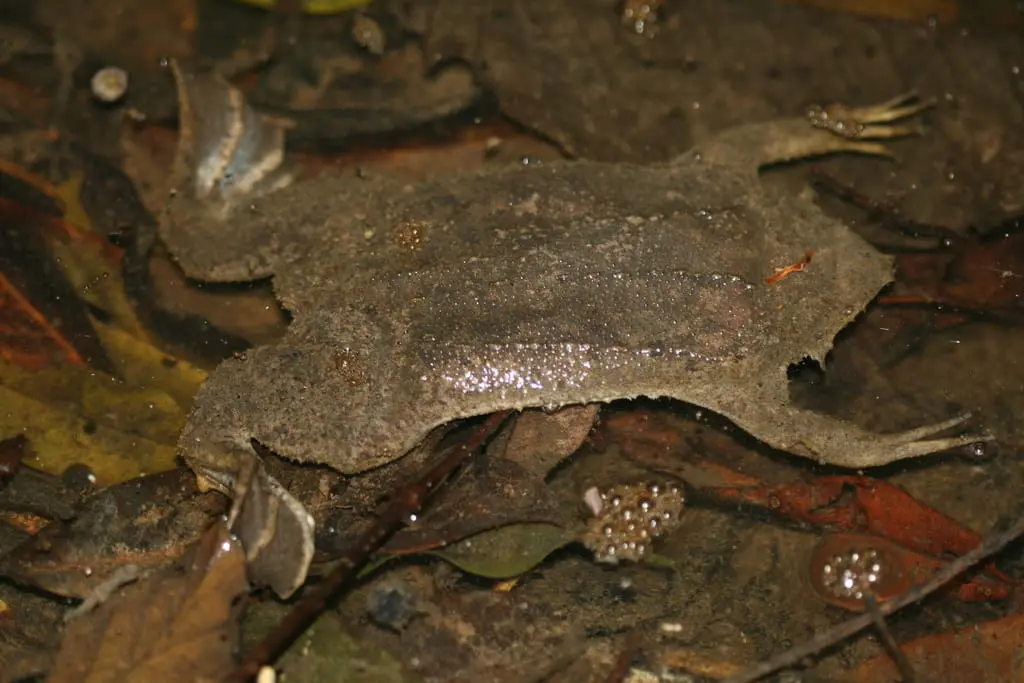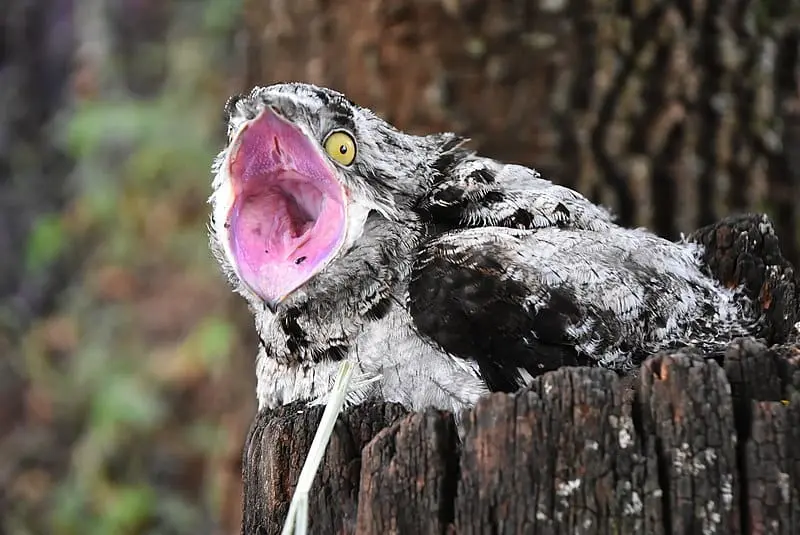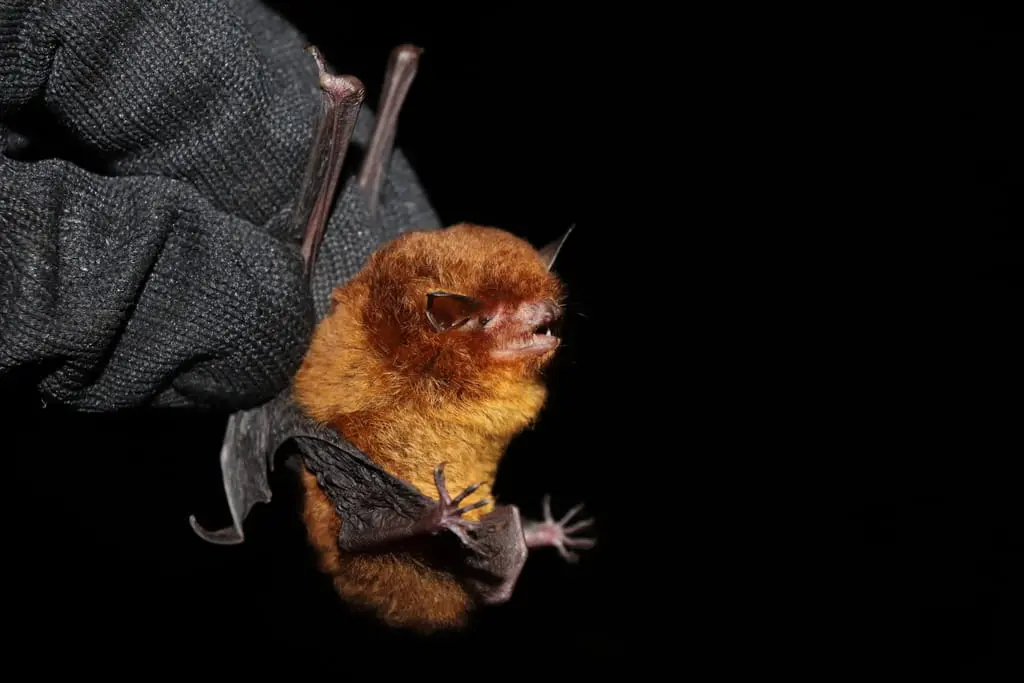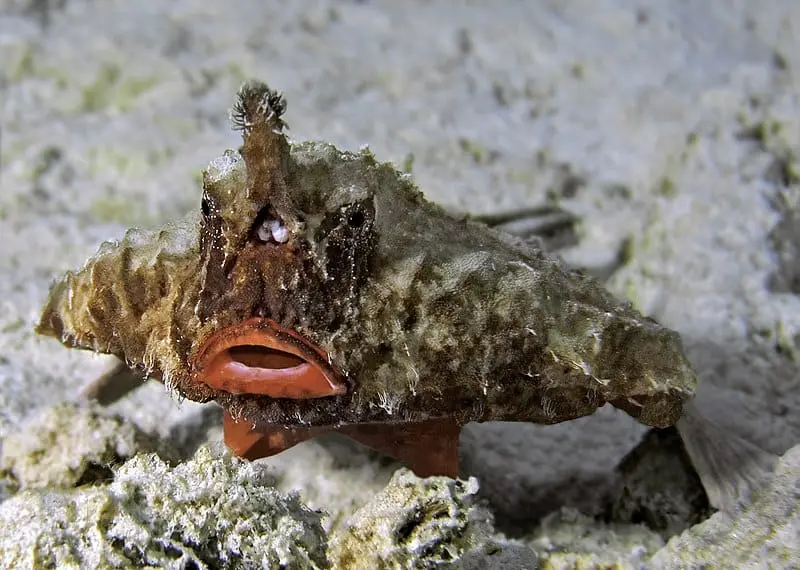The most unusual animals in Brazil
Many Brazilian animals are known throughout the world for their beauty. Other animals, however, have become famous for their unique characteristics. As strange as these animals may be, these physical adaptations were not established by coincidence, but according to each animal’s need to survive.
Brazil is one of the countries with the greatest diversity of animals, so there is no way to define exactly which animals could be subjectively classified as the most unusual or singular. However, five animals (one from each phylum) have been selected as examples of the diversity of the Brazilian fauna.
Common Surinam toad (Pipa pipa)

TThe common Surinam toad or star-fingered toad is often used as an example of trypophobia. It is a species of frog found throughout most of the Amazon rainforest, both in Brazil and in other South American countries.
The common Surinam toad is no more than 7 inches (17 cm) long, and its body is almost completely flattened, making it look like a leaf - a feature that helps it camouflage itself and avoid predators. They spend most of their time in riverbeds, rising to the surface every half hour to breathe, and rarely leave the water.
Unlike other anurans, Surinam toads have very small eyes on top of their heads, no teeth and no tongue. As a result, they have evolved long limbs and fingers that do not end in round lobes, but rather in the shape of small stars1 These very unusual fingers contain sensory organs at the tips that help them locate and capture worms, aquatic insects, crustaceans, and small fish on which they feed.
Another feature that makes these animals so unique is their method of reproduction: after the female releases her eggs, the male fertilizes them and places them on the female’s back. A thick layer of skin then grows over the eggs, leaving small openings that make the female’s back resemble a lotus seed.
After three or four months, the hatchlings emerge from the eggs and the mother’s back, fully formed - not passing through the tadpole stage. Although unusual, this method ensures that your chicks are protected until they can live on their own.2
Potoos (Nyctibius spp.)

Also known as poor-me-ones, potoos are very ancient birds, having existed without much physical change since the Pleistocene — the same period when mammoths and giant sloths roamed the earth.3
They are nocturnal birds native to Central and South America. Of the seven extant species, five are found in the Amazon Basin region, but, the rufous potoo (Phyllaemulor bracteatus) is the only one that exclusively inhabits the Amazon Rainforest. The long-tailed potoo (Nyctibius aethereus) and the Great potoo (Nyctibius grandis) can also be found in part of the Atlantic Forest, and the White-winged potoo (Nyctibius leucopterus) has an isolated population in southern Bahia and Espírito Santo. The common potoo (Nyctibius griseus), on the other hand, can be found throughout Brazil and other countries in Central and South America.
Following studies on the bone structure and genetic divergence of the species conducted in 2009, the rufous potoo ceased to be part of the genus Nyctibius (like all other urutaus) and became the only member of its own genus, Phyllaemulor.4
Potoos feed mainly on insects - but small birds, reptiles and bats can also be part of their diet.
They are known for their excellent camouflage, which makes them look like tree trunks and makes them almost invisible when they sleep motionless in trees during the day. They have a disproportionately large mouth compared to their small beak and a unique feature called the “magic eye,” which consists of two or three small slits in their eyelids that allow them to see their surroundings even when their large eyes are closed5.
If camouflage is not enough to ward off potential threats, potoos will either open their eyes and mouth wide to intimidate the predator, or fly away. Another characteristic that distinguishes them from other birds is that they do not build nests. They lay a single egg directly on the tip of a stump, which takes about a month to hatch.
Bats (Microchiroptera sp.)

Bats are strange animals that many people think of as flying rats, but they are not even rodents. Bats are the only flying mammals and one of the few that can use echolocation. They have a combination of habits and physical adaptations that vary greatly from species to species, depending on their diet.
Most are insectivorous, but there are some that feed on fruit, nectar, small vertebrates, and two species that feed on blood. Those that feed on insects with hard shells usually have larger and fewer teeth than those that feed on soft insects. Nectar feeders, on the other hand, have long snouts, bristles on their huge tongues to help them catch the nectar, and their lower jaw is larger than their upper jaw - giving them a strange appearance.
Fish-hunting bats have large, puffy cheeks like bulldogs, and long canines and claws that are perfect for grabbing prey on the fly. Vampire bats have small snouts and usually feed on the blood of livestock by making a small incision, applying anticoagulant saliva, and licking the small drops of blood that ooze from the wound.
So you can see that such a wide variety of foods and hunting methods have a direct effect on the anatomy of these animals. While some species, such as the Shaggy bat (Centronycteris maximiliani), can be considered pleasing, others, such as the Furipterus horrens, have such an unusual appearance that even their scientific name determines them as “horrible”.
Despite their generally strange appearance, bats have excellent senses of smell, taste, and hearing. The many wrinkles on their faces and the large ears of many species help them to direct and pick up sound waves of different frequencies.
Although Brazilian species orient themselves primarily by echolocation, they are not blind and can detect changes in ambient light. Their vision is also essential for navigating between foraging and resting sites, as echolocation is only effective over short distances.
Batfish (Ogcocephalus spp.)

The batfishes of the genus Ogcocephalus comprise 12 species, ten of which are distributed throughout the Western Atlantic. Four species are found along the Brazilian coast: O. nasutus, O. notatus O. vespertilio and O. declivirostris6.
These fish have a number of strange physical adaptations. Their bodies are covered with small, irregular protuberances formed by keratinized, calcified scales with small fuzzy tufts scattered throughout. Besides serving as armor, these modifications to their scales help them camouflage themselves among the rocks and crevices where they hide during the day7.
At night, they come out to forage, walking slowly on the sea floor with the help of their pelvic and pectoral fins, which can be used as four small legs. Unlike most other fish, their gills are not on the sides of their heads, but in the middle of their bodies, after the pectoral fins.
Batfish and anglerfish belong to the same family. Anglerfish have a small elongated apparatus called an illicium, consists of the first attached rays (threads) of what should be their dorsal fin, with a small lure at the end that swings out and attracts other fish. Batfish, however, feed on crustaceans, mollusks, polychaete worms, and echinoderms - creatures that cannot see very well. So instead of swinging his lure, he has adapted it to release a small fluid that attracts his prey8.
In addition, his illicium is not exposed, as it is in the anglerfish, but hidden inside. Only when the fish wants to release the substance, you can see how it is quickly stretched like a small rope from the head to the level of the mouth7.
Matamata (Chelus spp.)

The matamata or mata-mata is a terrapin that can be found mainly in the Amazonas, Orinoco, and Negro river basins.
Its head is flat and triangular; its snout is long and thin like a straw; it has two sensory barbels on its chin; a large mouth; tiny eyes; and numerous flaps of skin and tubercles cover its head and neck. These features and the algae that typically cover older individuals, make matamatas expert at camouflaging themselves and capturing unseen prey.
Matamatas are carnivorous, feeding on fish and aquatic invertebrates. They use their leafy, rock-like appearance to blend into the vegetation at the bottom of slow-moving streams while they wait for their prey to pass by to snatch it up9. In addition, the flaps of skin on their necks are also extremely sensitive and help them detect nearby movements.
Its shell can measure over 18 inches (45 cm)9 and weigh up to 22 pounds (21 kg), making it the largest species of its family in South America.
Until recently only one species was known, the Chelus fimbriata. However, in 2020 a second species, Chelus orinocensis, was formally classified. The latter is found in the Orinoco and Rio Negro basins, while Chelus fimbriata is found in the Amazon basin. Those living in the Orinoco generally have a lighter coloration and a more oval-shaped shell, compared to the matamatas of the Amazon basin, which are characterized by a darker coloration and the rectangular contours of the shell9.
Although the matamata is widely known, its natural history, conservation status, and distribution are largely unknown. Primarily due to its large range, matamatas are not considered to be under immediate threat and are listed as “Least Concern” on the IUCN Red List of Threatened Species. and are not included in any of the CITES Appendices.
Despite this, there is evidence that the Orinoco matamata is frequently collected for the illegal pet trade in Colombia and Venezuela, but the frequency of capture and its impact are not known. Therefore, it is crucial to collect more information and assess its exploitation throughout its range to gain a better understanding of its conservation status and develop appropriate conservation and management programs9.
Read more at:
-
Gerald Mayr (2005) The Palaeogene Old World potoo Paraprefica Mayr, 1999 (Aves, Nyctibiidae): Its osteology and affinities to the New World Preficinae Olson, 1987, Journal of Systematic Palaeontology, 3:4, 359-370 https://doi.org/10.1017/S1477201905001653 ↩︎
-
Costa, T.V.V., Whitney, B.M., Braun, M.J. et al. A systematic reappraisal of the Rufous Potoo Nyctibius bracteatus (Nyctibiidae) and description of a new genus. J Ornithol 159, 367–377 (2018). https://doi.org/10.1007/s10336-017-1511-2 ↩︎
-
José Ignacio Borrero H, Notes on the Structure of the Upper Eyelid of Potoos (Nyctibius), The Condor, Volume 76, Issue 2, 1 April 1974, Pages 210–211, https://doi.org/10.2307/1366732 ↩︎
-
Cavalcanti, Mauro José e Lopes, Paulo Roberto Duarte. Variação geográfica de caracteres quantitativos em Ogcocephalus vespertilio (Linnaeus) (Teleostei, Lophiiformes, Ogcocephalidae). Revista Brasileira de Zoologia online. 1998, v. 15, n. 1. Acessado 3 Setembro 2022, pp. 125-134. Disponível em: https://doi.org/10.1590/S0101-81751998000100010 . Epub 10 Jul 2009. ISSN 0101-8175. https://doi.org/10.1590/S0101-81751998000100010 ↩︎
-
Gibran, FZ e Castro, RMC (1999), Atividade, comportamento alimentar e dieta de Ogcocephalus vespertilio no sul do Atlântico oeste. Journal of Fish Biology, 55: 588-595. https://doi.org/10.1111/j.1095-8649.1999.tb00701.x ↩︎
-
Mario Vargas-Ramírez, Susana Caballero, Mónica A. Morales-Betancourt, Carlos A. Lasso, Laura Amaya, José Gregorio Martínez, Maria das Neves Silva Viana, Richard C. Vogt, Izeni Pires Farias, Tomas Hrbek, Patrick D. Campbell, Uwe Fritz, Genomic analyses reveal two species of the matamata (Testudines: Chelidae: Chelus spp.) and clarify their phylogeography,Molecular Phylogenetics and Evolution https://doi.org/10.1016/j.ympev.2020.106823 ↩︎
